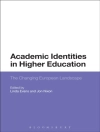The picture on the front of this book is an illustration for Totakahini: The tale of the parrot, by Rabindranath Tagore, in which he satirized education as a magnificent golden cage. Opening the cage addresses mathematics education as a complex socio-political phenomenon, exploring the vast terrain that spans critique and politics. Opening the cage includes contributions from educators writing critically about mathematics education in diverse contexts. They demonstrate that mathematics education is politics, they investigate borderland positions, they address the nexus of mathematics, education, and power, and they explore educational possibilities. Mathematics education is not a free enterprise. It is carried on behind bars created by economic, political, and social demands. This cage might not be as magnificent as that in Tagore’s fable. But it is strong. Opening the cage is a critical and political challenge, and we may be surprised to see what emerges.
Mục lục
Preface; Introduction: Seeing the Cage? The Emergence of Critical Mathematics Education; Part I: Mathematics Education is Politics; Chapter 1: Mathematics as a Weapon in the Struggle; Chapter 2: A Critical Approach to Equity; Chapter 3: The Role of Mathematics in the Destruction of Communities, and What We can do to Reverse this Process, including Using Mathematics; Chapter 4: The USA Mathematics Advisory Panel: A Case Study; Part II: Borderland Positions; Chapter 5: Mathematics Teaching and Learning of Immigrant Students: An Overview of the Research Field Across Multiple Settings; Chapter 6: Learning of Mathematics Among Pakistani Immigrant Children in Barcelona: A Sociocultural Perspective; Chapter 7: Mathematics Education Across Two Language Contexts: A Political Perspective; Chapter 8: Genealogy of Mathematics Education in Two Brazilian Rural Forms of Life; Chapter 9: On Becoming and Being a Critical Black Scholar in Mathematics Education: The Politics of Race and Identity; Intermezzo: Totakahini (The Tale of the Parrot); Part III: Mathematics and Power; Chapter 10: The Hegemony of Mathematics; Chapter 11: Bringing Critical Mathematics to Work: But can Numbers Mobilise?; Chapter 12: Shaping and being Shaped by Mathematics: Examining a Technology of Rationality; Part IV: Searching for Possibilities; Chapter 13: Potentials, Pitfalls, and Discriminations: Curriculum Conceptions Revisited; Chapter 14: A Philosophical Perspective on Contextualisations in Mathematics Education; Chapter 15: Mathematics Education and Democratic Participation Between the Critical and the Ethical: A Socially Response-able Approach; Chapter 16: Towards a Critical Mathematics Education Research Programme?; Chapter 17: Opening the Cage? Critical Agency in the Face of Uncertainty; Contributors.












